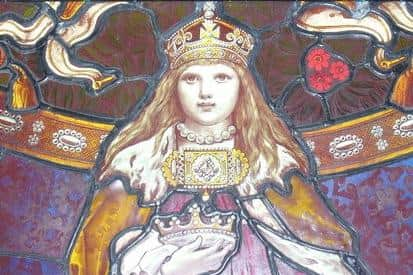Margaret, Maid of Norway: How Scotland's fate took a tumble from a horse and fell through the fingers of a delicate child – Susan Morrison
When King Alexander III lost his wife Margaret in 1275, he didn't seem to be in a big hurry to marry again. In fact, he seems to have indulged his swinging side. For ten years, he took to girl-chasing on an epic scale. According to the Lannercost Chronicle, “he used never to forbear on account of season or storm, nor for perils of flood or rocky cliffs but would visit none too creditably matrons and nuns, virgins and widows by day or by night as the fancy seized him”, sometimes “even in disguise”. As a Tinder profile, it certainly stands out.
Well, he had that king's luxury, an heir and a spare. His late wife had given him two lads, Alexander and David. Oh, and a daughter, Margaret across in Norway, married and expected to create more royal children.
Advertisement
Hide AdAdvertisement
Hide AdAnd then, as is so often the way in Scotland’s history, fate stepped in just when things were looking good. The boys died. David in 1281, then Alexander in 1284. Childbirth killed Margaret in 1283. The baby survived. A girl.
Alexander III needed an heir. Time to raise his baby-making game. Well, he was only in his forties. Still in his prime. He married 22-year-old Yolande of Dreux. Perhaps it was the memories of rampaging about Scotland whatever the weather in his womanising days, perhaps he really did just want to surprise Yolande on her birthday, or perhaps it was the pressure to get himself a prince, but he set out on a stereotypically dark and stormy night to see his bride, then in Fife.
Drink had probably been taken. That also might have had something to do with it. They found him in the morning, at Kinghorn. His horse had stumbled, a fall, and the king's neck was broken. The heir to the throne of Scotland was the little girl his daughter had died giving birth to.
Scotland dealt with this amazingly well. Alexander had been smart enough to get the boisterous band that made up Scotland's aristocracy to Scone to do a lot of serious swearing of loyalty in the event of his death. Pretty far-seeing of him, which is why it's a pity he didn’t extend his risk assessment skills to nocturnal horse riding.
A group of men was appointed with the fantastic title of “Guardians of Scotland”. These men were to protect and guide this little queen, and they started the negotiations to get the granddaughter of the dead king across. The fact that the heir was a girl was widely considered mildly awkward, but it could be managed. There was the chance of a good marriage. King Edward I had a son. That might be an excellent idea all round.


Who was this little girl who now ruled Scotland? She was known as Margaret, Maid of Norway, and when her grandfather died, she was only seven years old. Sadly, as a person, she has left little mark on the historical record.
Her father, King Eric, had only been 15 when she was born, and didn’t really have much of a say in her upbringing. He does appear to have been reluctant to let his child cross the sea, but that could be because Scotland was having a bout of Bruce rebellion at the time. The father of The Bruce was miffed because he wasn’t appointed a Guardian. It was all sorted out, and egos were soothed. For the time being.
In the end, Eric had to let Margaret go. It's safe to say that he knew he probably wouldn’t see her again. He didn’t, of course. Margaret, Maid of Norway died in Orkney, far away from her home. There were those who suggested the sea voyage had killed her, but food poisoning was probably more likely.
Advertisement
Hide AdAdvertisement
Hide AdHer little body was taken back to Norway. Her father insisted the coffin be opened to confirm this really was his child, then laid her to rest next to her mother. This confirmation came in handy.
A few years after her tragic death, another Margaret, Maid of Norway, turned up. A woman claiming to be the dead princess appeared in Bergen, with an astonishing story to tell. The Maid of Norway hadn’t died. She had been sold, she claimed, and carried away to Germany, where she married. Now she had returned to claim her rightful throne. Some people believed her, even though there were more holes in her story than a second-hand suit of chainmail. Most didn’t.
For one thing, the little girl died fairly publicly. There were many in attendance when she breathed her last in the arms of the highly respected Norwegian Bishop Narve. Secondly, that crucial identification by her grieving father. And finally, this ‘False Margaret’ was roughly 40 years old, when the real Maid of Norway would only have been around 19. Given the standards of skin care at the time, it's a fairly safe bet to say she probably looked her age. They saw through her story, and burned her at the stake.
In Scotland, the loss of the last legitimate heir to the throne plunged us into the Wars of Independence, decades of unbelievably vicious, brutal warfare that in some ways still defines us, and our relationship with the kingdom next door.
The entire fate of the nation took a tumble from a horse and fell through the fingers of a delicate child. The death of that little girl impacts our lives today. Had she lived, ruled, married and had children there would have been no Robert the Bruce, no Battle of Bannockburn, no Declaration of Arbroath.
Mind you, on the plus side, no shonky Mel Gibson accent in Braveheart. Rest in peace, little Maid.
Comments
Want to join the conversation? Please or to comment on this article.
